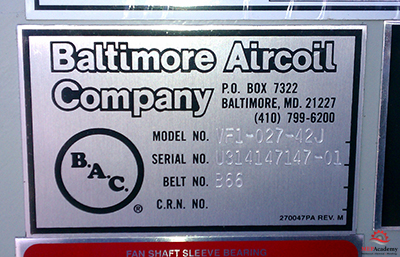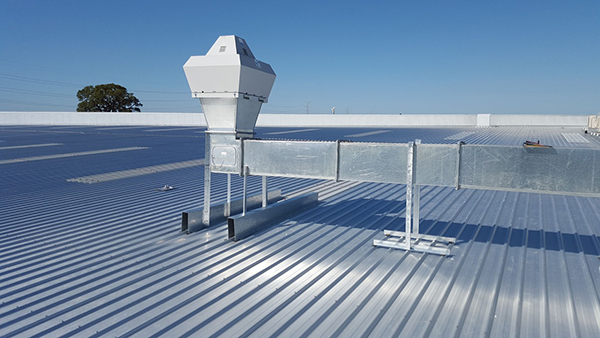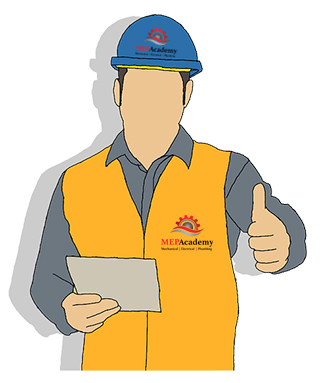If the project is new construction, then there won’t be much to see except where the proposed building will be set on the lot and some of the logistics such as allowable lay-down area for materials and job site trailers/offices.
For retrofit projects of existing buildings there are some important aspects of the project walk that you will want to be sure to capture while your there if not already provided in the bid documents.
In order to get the most of your time when attending a project Job Walk you should get at least the following information.
Photo or Video of Existing Conditions and Equipment
Its important to take a lot of pictures of the area and equipment that is affected by the renovation. You’ll use these photos or videos back at the office during your review so that you can share what you saw with the team involved with assembling the bid. Often, you’ll see something in the photo that you didn’t notice during the job walk which the photos and videos allow you to review at a more relax environment.

- Equipment Labels
- Make sure to get a good picture of all the existing equipment that needs to be remove or replaced.
- Take a picture of the equipment labels that identify the make and model number of the piece of equipment plus all the additional capacity information listed.
- Get a picture of the electrical panel that serves the existing, including the inside list of breakers. The photo will also show which breakers are being used and also which are in the off position.
- 360 Degree View of Area and Equipment
- Take a picture on all four sides of any equipment or area involved in the renovation. This is important so that you can review any side of the equipment back at the office.
- Auxiliary Equipment and Accessories
- Make sure to get pictures of any ancillary equipment that is part of the renovation, such as expansion tanks, plumbing fixtures or electrical.
- Electrical panels related to the work if new circuits are required or are to be upgraded.
- Control panels or controllers that need to be replaced or upgraded.
- Panoramic Views
- Step back from the actual equipment as much as makes sense to get a good overall photo of the area of work. Sometimes those walking the project will get good closeup pictures of the equipment but won’t give an overall view of the total area. It’s easy to zoom in on a long shot picture, but that’s impossible with one that is already shot up close.

- 5) Similar Equipment
- Often the project may require you to replace equipment that looks the same, such as replacing all the rooftop Air Conditioners. In this case in order to keep your photos organized as to which photo belongs to which AC unit, you’ll need some way to identify each.
- If there are equipment tags on each unit, then take a picture of the tag first and then another for each side of the AC unit or similar equipment before moving onto the next. If there are no equipment tags, then you can make your own by writing on a piece of paper the Equipment Tag, such as AC-1, then taking a photo of your written tag, then each side of the AC unit.
Dimensions of Important Items
The following are some of the items to thing about getting dimensions of while you’re onsite.
- Equipment pads or platforms
- Dimensions of concrete pads or platforms where the new equipment will sit.
- Rigging Pathway
- If you are moving old equipment out and new equipment in, then you will need to measure hallways and doorways along the path from the room where the equipment is located to where it enters the building.
Make sure to get all the pertinent photos of the equipment or work area that is part of the contract. For retrofit projects
As-built Drawings (Existing Drawings)
If doing a renovation or a design/build project it’s a good idea to ask the owner, facility engineer or there representative if they have copies of the existing MEP drawings. This can make your job a lot easier if you need to redesign the system.

Also, any Architectural or Structural drawings can be useful especially if your replacing equipment on the roof. If the new equipment is heavier or if the structural code has gotten more stringent from the time the building was designed and built, then you might need to submit a structural review in order to confirm that the existing structure can hold the weight of the new equipment.
It best to get these in electronic format or to take pictures of the existing drawings if not available digitally.
Tools to Bring on your Job Walks

- Some form of measuring tape, whether digital or hand held.
- PPE Equipment. Some sites require that you bring a Hard Hat, Goggles, Fire Retardant Clothing, Safety Shoes/Boots/Vest, etc. You should always keep a set of PPE in your car, so that you are always prepared for a site walk. Even if it’s not required, it’s smart to wear protective clothing as some equipment rooms contain sharp edges and job site conditions could contain slippery or dirty surfaces.
- Cell phone or camera to take pictures and videos.
- iPad or note pad for taking notes and writing down dimensions and making sketches.
- Flashlight to see dark areas in mechanical rooms, attics or within equipment.
- A copy of the construction drawings and scope of work.
Bring Important Subcontractors & Vendor
If you are bidding on a turn key project, one where you are responsible for all of the other trades. This often occurs when the majority of the work is related to the mechanical, such as the replacement of major HVAC or Electrical equipment upgrades.
It’s also most likely that your company specializes in one of the MEP trades and will need to provide another subcontractor to do the other portions of the work. You might be an HVAC contractor that is comfortable replacing the mechanical equipment, but not in upgrading the electrical panels. It’s also possible that quite a bit of new structural work will be required to support the new equipment.
Maybe you want to bring out the manufactures representative of the major equipment that is being replaced. Be prepared to bring your team members that will be involved in providing you with the quotations you’ll need to provide a complete proposal. This is especially important on Design/Build projects where you are responsible to provide a complete and operable system per the intent of the RFP. This is also important in renovation so that your team can assess the existing conditions in order to apply reasonable labor factors.







